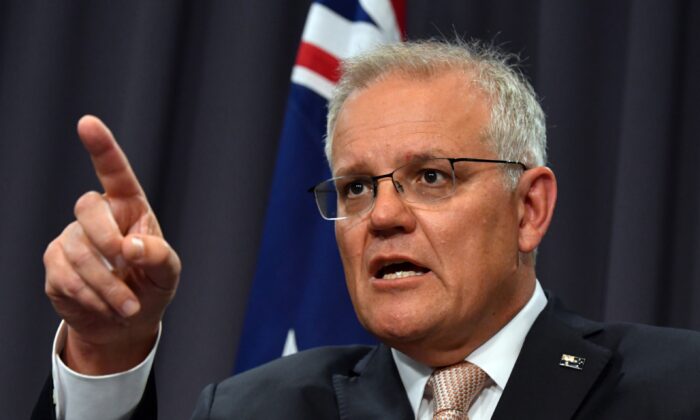
Australian Prime Minister Scott Morrison has announced Australia’s plan to reach net zero emissions by 2050, ahead of the 2021 United Nations (U.N.) Climate Change Conference (COP26) in Glasgow, Scotland.
This comes after international pressure, including from current and past U.N. officials, who have demanded that Australia reduce emissions and cut coal use.
Morrison also pledged that regional Australia—where key resource, energy, and primary industries underpin the nation’s economy—would not take the brunt of a strong commitment to net zero that will see a monumental shift in how businesses will be required to operate.
“Australians want action on climate change,” Morrison said in a media release. “But they also don’t want their electricity bills to skyrocket, the lights to go off, for their jobs to be put at risk or for the way of life in rural and regional communities to be sacrificed.”
Morrison said the government had developed a pivotal plan on reaching net zero emissions without undermining regional jobs and industry.
“At Glasgow I will confirm that Australia will continue to play our part. We will set a target to achieve net zero by 2050, and have a clear plan for achieving it,” the prime minister said.
“I always said I would not set a target to achieve net zero by 2050 unless we had a plan to achieve it. We now have that plan.”
This comes after lengthy deliberations between Morrison and Nationals leader Barnaby Joyce, who gave Morrison a document last week outlining the conditions required before the Nationals would agree to a net zero goal.
However, the details of Morrison’s plan, along with the contents of the document, remain unknown.
But Morrison did outline that Australia would continue pursuing a “technology, not taxes” approach to reducing emissions by developing and innovating low-emissions technologies.
“We have not and would never make a blank cheque commitment or impose new taxes, as Labor has, to achieve net zero. That would leave Australians footing the bill,” he said.
In particular, this would be done as part of the nation’s technology investment roadmap, which has already seen a $20 billion investment in five key areas: green hydrogen, energy storage, low emissions steel and aluminium, carbon capture and storage, and soil carbon.
Morrison also said that energy would remain affordable and reliable.
“Key to this approach is investment in new energy technologies, like hydrogen and low cost solar, to ensure our manufacturing, resources, agricultural and transport sectors can secure their future, especially in rural and regional areas,” he said.
Places like the United Kingdom, which has pioneered the development of renewable energy sources, are currently undergoing an energy crisis as insufficient wind generation has upped the need for natural gas—a fossil fuel now in high demand as China and countries across Europe face their own energy shortfalls.
Morrison remained firm on Australia’s target to reduce emissions by 26 to 28 percent below 2005 levels by 2030, as required under the Paris Agreement, despite calls to also strengthen that commitment.
Despite producing just over one percent of the world’s emissions, Australia’s deadline is now more ambitious than two of the world’s biggest emitters, China and India, which combined, produce more than a third of the world’s carbon dioxide.
China has continued to commission new coal-fired power generation and maintains an extended net zero deadline of 2060. Chinese regime leader Xi Jinping has yet to announce his attendance at COP26.
India has also said it will continue to utilise coal-fired power generation, and has not set a net zero target.
Pezou : Australia Declares Goal to Reach Net Zero Emissions by 2050